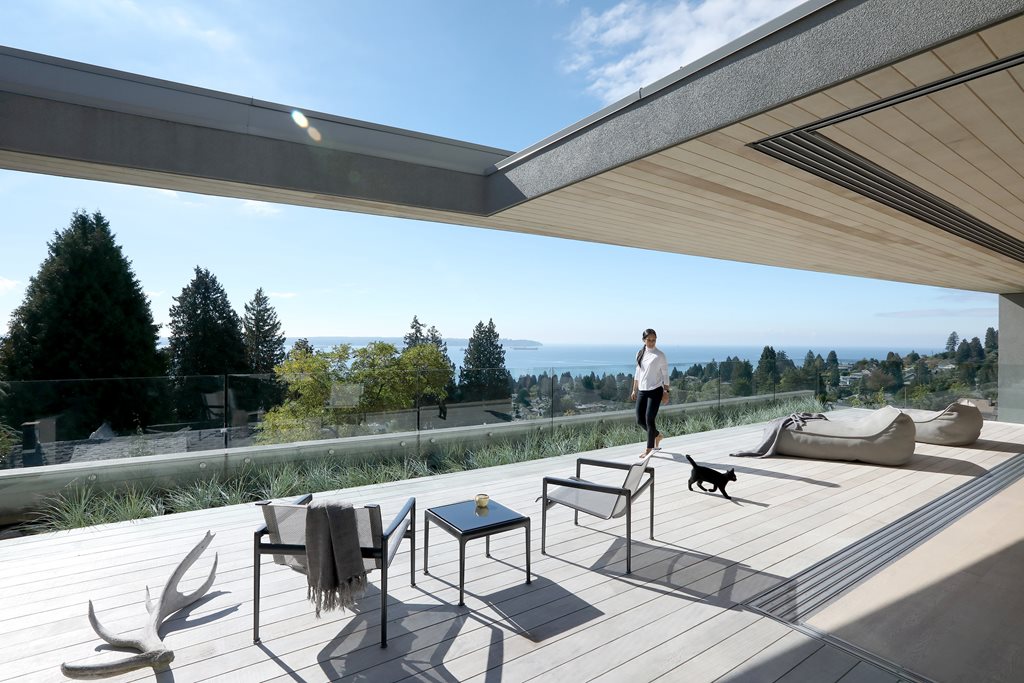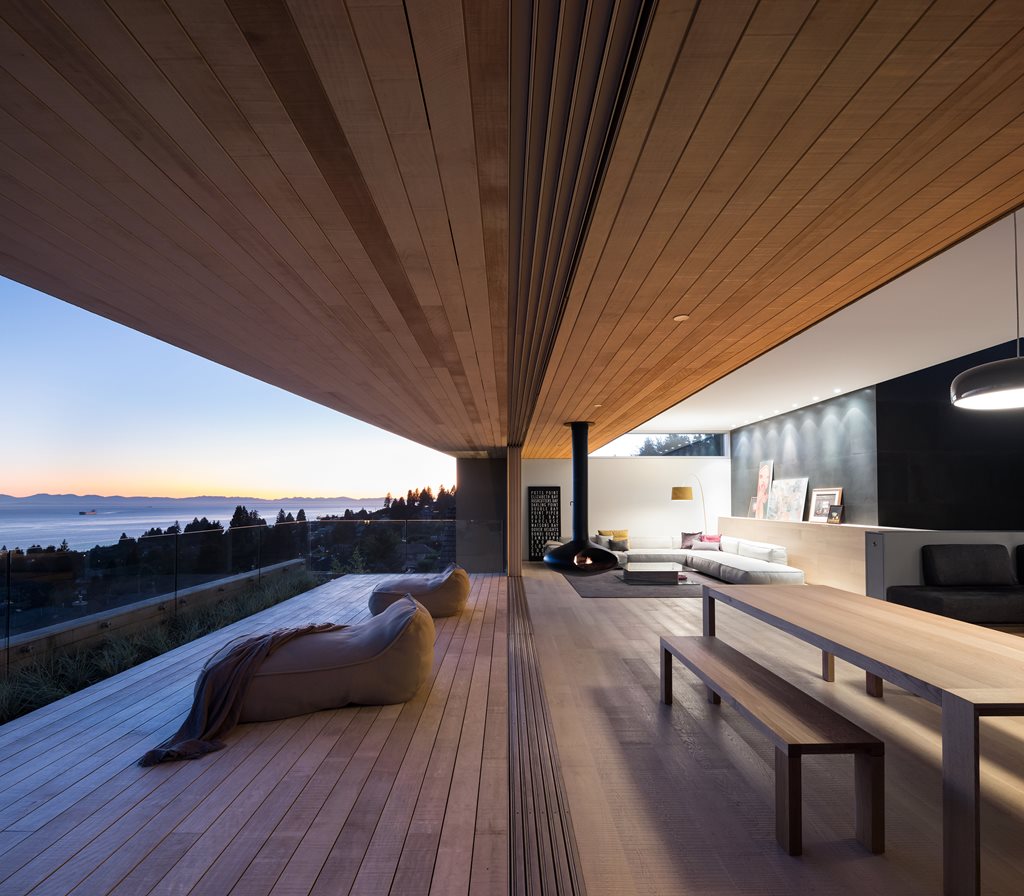Designed for an Australian expatriate family, G'day House explores Australian design elements in a Canadian context.
According to designer Matt McLeod, the clients were looking for a home that would support a relaxed attitude towards daily life and help them re-connect with the warm weather lifestyle they were missing from Australia.
"There are two aspects to this: both a desire to live outside (or partially outside) during some of the year and also to enjoy the particular social benefits of a more open house," says McLeod.
"Although Canada is generally cold, Vancouver exhibits one of the most temperate climates in the country which makes indoor-outdoor living possible on many days from mid-April to the end of October. As the absolute daytime temperatures aren't as warm as they might be in Australia, we typically need to do a few things to extend the use of these outdoor spaces into the evening hours and shoulder seasons: spaces are orientated to the south, they are protected with walls or wind-breaks and are supplemented with outdoor heating from a fireplace or fire pit. All of these strategies were employed in G'day House."

Column-free sliding doors were also positioned at the south-east corner of the house, effectively doubling the size of the living area when open, and materials, form, and spatial relationships were chosen to evoke the feel of a beach house: simple, casual and flexible. The dining table and wood-burning fireplace can also be rotated to support a variety of arrangements depending on weather and number of guests.

As the clients like to entertain, they felt that the kitchen should anchor the primary living spaces at the upper floor. Combining the dining room and kitchen into a single long space allowed for a narrow floor-plate and resulted in a generous side-yard area, used for outdoor cooking.
A reflecting pond and fence at the scale of house connect this space with an open terrace to the south and an enclosed garden to the north while creating privacy to the street. This sequence of outdoor spaces from front yard to terrace encourages the direct exterior arrival of guests to the kitchen.

"Apart from the feeling of living in these outdoor spaces there is a social benefit of creating a house that can be more open than closed," says McLeod.
"Our clients were used to what might be termed a culture of the "drop-in". They were accustomed to friends and neighbours dropping by to visit and socialise with no pre-existing arrangements - an unusual idea in our part of the world! This kind of activity is supported by a house that can open to its immediate environment.
"Friends can drive or walk by the house and immediately tell if our clients are home, what they are up to, and whether now is a good time for a visit. Since completing this house we have noticed that this phenomena is not that different from the explosion of outdoor culture that happens on the first day of good weather all over Vancouver- residents spill out into the streets en-masse to enjoy sidewalk cafe's and restaurants. Canadians, who are normally a reserved bunch, become a bit more outgoing, engaging and spontaneous."

